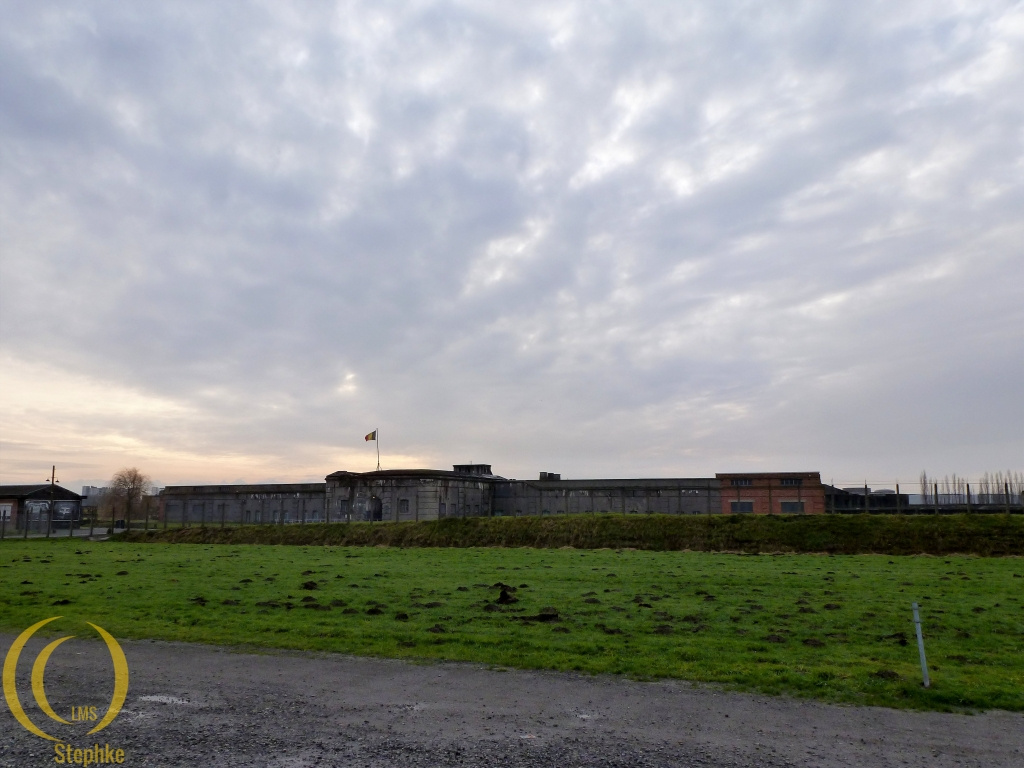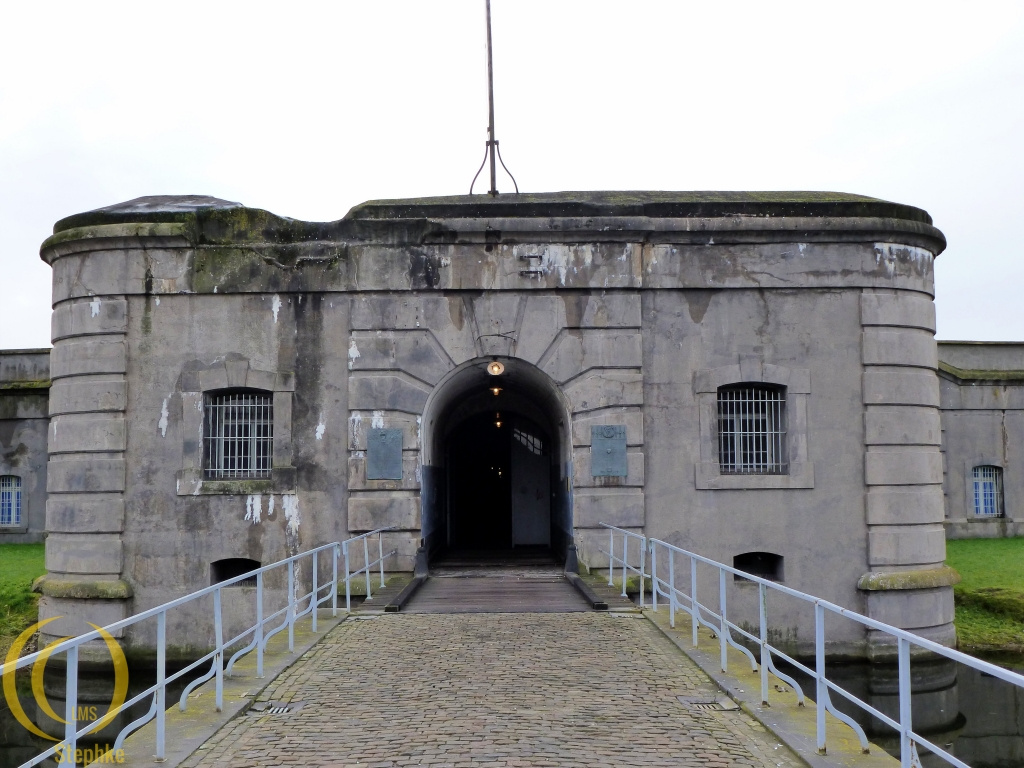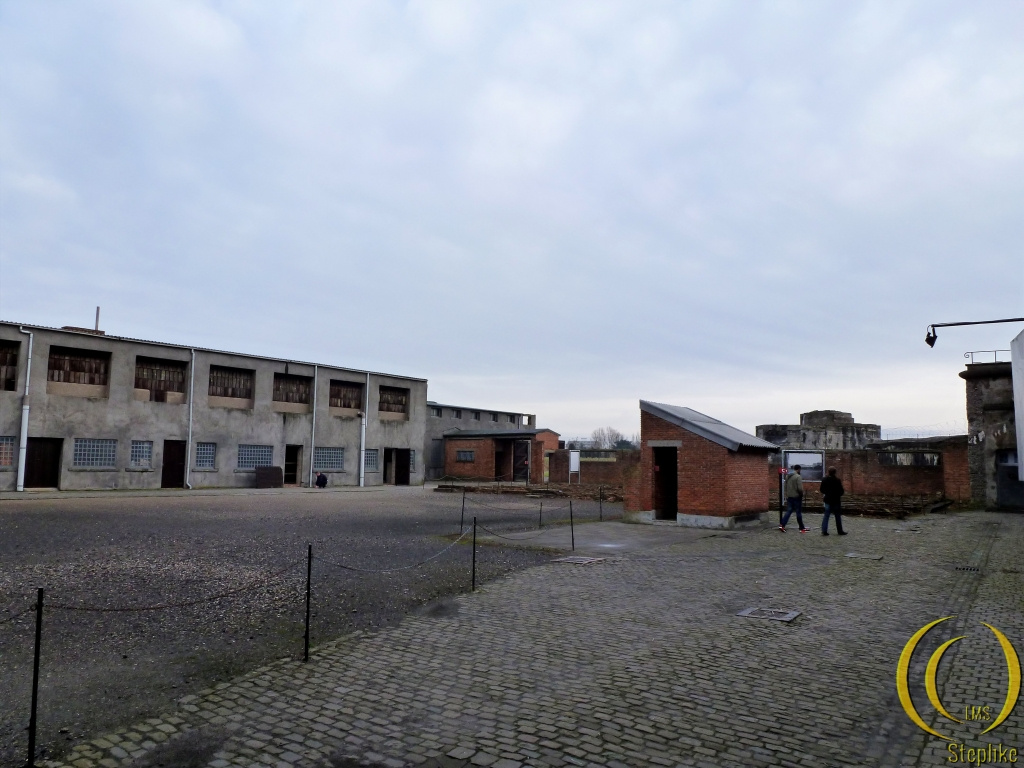National memorial of Breendonk
Breendonk is an old fort located next to A12 highway at Willebroek. It’s about 25 km from Brussels and about 19 km from Antwerp. The name Breendonk stands for Large Marshland. It was built as part of the fortification defence to protect the city of Antwerp and especially the port of Antwerp in addition to the 1859 stronghold. It was only “one” of the forts surrounding Antwerp. Each fort is lying a certain distance from the city. The total line of defence was extended over nearly 95 kilometers. Other forts included in this defensive line are Stabroek, Brasschaat, Kapellen, Lier, Walem…. The forts were of various types, so they talked about first and second rank forts. Breendonk is a second rank fort. The construction started in 1909. About 41,000 cubic liters of non-reinforced concrete. It was surrounded by a ditch about 4m deep and 50m wide. It was almost completely covered with earth coming from excavated ditches, so it was hidden from enemy sight and had a bit more resistance against direct hits from the artillery. It was armed with about 30 cannons and howitzers. Some howitzers were placed directing other forts so they could help them in case of an enemy attack. It had four 75mm guns and four 120mm guns placed in embrace gun-carriages (turrets). These turrets were also sheltered by the raised earth. No anti-aircraft guns were located in the fort. The garrison located in the fort consisted of about 350 soldiers in wartime and about 100 in peacetime who had the task to prevent access into the fort. Soldiers took positions in those turrets.
During World War One several houses in the nearby neighborhood were taken down, on command, to clear the view of the gunners. The fort, which could resist French artillery with the 220 mm mortar gun, couldn’t resist the German 305 mm and 420mm shells. On October 1st 1914 the fort was bombarded the first time, a second time on October 6th and a third time on October 8th from beyond the fort’s own range artillery about 8-9 km away. It was hit by 563 Austrian 305mm mortar shells injuring the Fort commander Wijns so badly he died a short time later. The Germans took the fort and town on October 9th and Antwerp surrendered.
During World War Two the fort was used for a few days by King Leopold II of Belgium together with his Commander in Chief. From within the fort the king made his proclamation and received the commanders of the Seventh French army, together with the commander of the British forces and General Billotte commander of the Group of Northern Armies. This was the period from May 10 till May 16th 1940. Near the end of September 1940 the first victims were brought to Breendonk by Sturmbahnfürher Phillip Schmitt. From now on the Fort became a transit camp (Auffanglager). It was the center for the SIPO (Sicherheitspolizei) and the SD (Sicherheitsdienst) , the German political police forces. During the first year the occupation of the camp was almost evenly split between Jews and political prisoners. From 1942 the Dossin barracks, located in Malines (Mechelen), were used to collect the Jews before they were deported to the concentration camps in German, Poland and Austria. It was then used for political prisoners only and the regime was hardened so it hardly differed from the other concentration camps. In September 1941, the SD Wachtgruppe arrived at the camp as backup. These existed merely out of Flemish SS. With almost no food the prisoners were forced to hard labor and had to undergo severe cruelties. Prisoners were tortured and had to stand for hours on the parade ground (Appellplatz) where often Schmitt sent his dog Wolff to prisoners who were too slow or .. . For hours prisoners had to stand naked outside to have a shower for a few minutes. Warm water was only a matter of seconds, then cold water was used. While standing there, they were often amusingly watched by the wife of an SS man. Some survivors said that even the executions were cruel. Those who were sentenced to death by hanging were mostly hanged with a thick rope so the death struggle took a long time. Sometimes someone climbed onto the hanged person to shorten the struggle. About 3500 prisoners in total, including women, were subjected to “the hell of Breendonk” as it was later called. Half of these did not survive the camps.
Malines trials: After the war most of the Belgian SS men, civilians who helped or worked for the Germans and prisoners who behaved badly, stood trial in the “Maline trials”. SS men Wijss, a former boxer and one of the cruelest, De Saffel, Lampaert, Raes, Brusselmans, Hermans, Amelinckx, Carleer, Van Praet and the prisoners Obler en Lewin were sentenced to death.
In the Antwerp trial, Sturmbahnfürher Phillip Schmitt was sentenced to death by the fire squadron. He was the only German who was sentenced to death in Belgium in 1949.







The corridor is seen from inside towards the main entrance above.







A cell was occupied by 48 men. Six people in each bed. During the night an armed guard stood in the corridor before each door.











Another view on the renovated bridge


This bridge ends the visit to the fort. The wood has been replaced. The original wood was destroyed by a fire.


Visit
Fort Breendonk visit https://www.breendonk.be. It is only a handful of days closed. For Dossin visit https://www.kazernedossin.eu